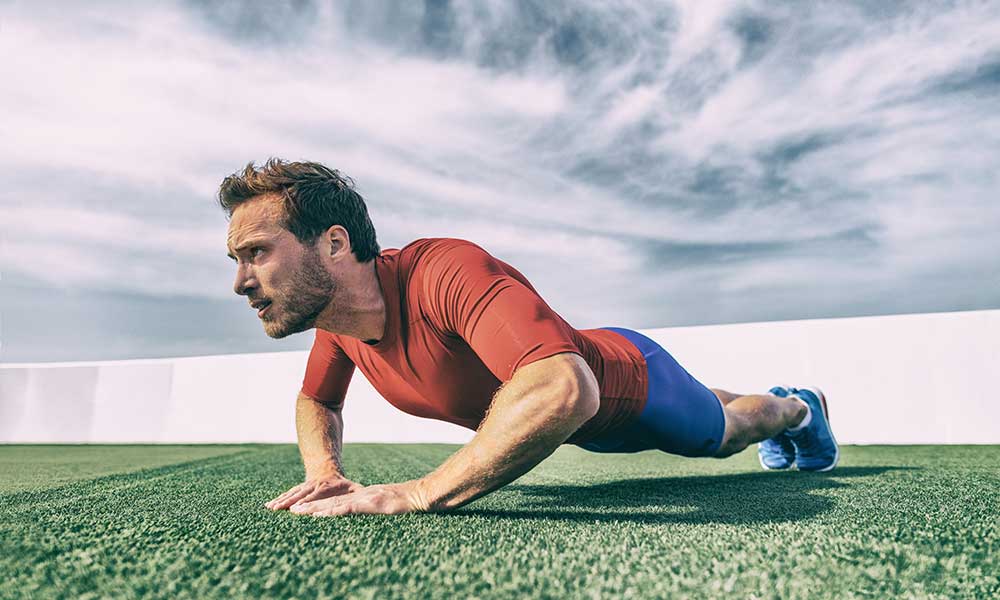As you know, two of the main supplies that you need for surfing are a surfboard and an ocean.
However, because of weather, distance, and flat spells, there may be times when you can’t get out on the water.
Fortunately, even when you’re far from the beach, you can still practice your surfing skills.
Here are a few ways you can practice your surfing in your own home.
Practice Lying on the Board
You lie face down on a surfboard to paddle it.
Lying down sounds simple enough, but to do it properly on a surfboard, you must position yourself just right.
You can practice the correct position at home.
For your board to balance, you must lie in the sweet spot.
It’s the same area where you normally stand when surfing.
To find it:
- Lift up your surfboard with one hand under it. The sweet spot position is where the board balances on your hand without rocking back and forth.
- Put your feet near the tail, but make sure they don’t hang off the end.
In the water, lying in the sweet spot will cause the nose of the board to stick out of the water about an inch.
Test this the next time that you take your board to water, even if that water is a swimming pool.
Memorize the position so that you can practice lying there at home.
Once you have identified the sweet spot, remove the fins of your surfboard and lay the board on the ground to practice the position.
If your fins don’t come off, set your surfboard across your bed with the nose and tail sticking over the sides.
You can also use a pillow to buffer the fins from the mattress.
- Lie in the sweet spot.
- Arch your back slightly.
- Raise up your feet a bit so they don’t drag behind you.
how to practice Your surf pop up at home
Another skill that you can practice at home is the art of popping up.
In pop-ups, you suddenly switch to a standing position.
Because this move is similar to doing powerful pushups, it’s a great technique to practice at home.
To do a pop-up:
- Start in a lying-down position.
- Push up on your hands while arching your back.
- Use your upper-body strength to swiftly swing your front foot up by your hands.
- Rise up on bent knees with both feet firmly on the board. Then, stand all the way up.
At home, you can practice this move on the floor or on your board.
- The floor is best for beginners. Mark a yoga mat with the positions for your hands and feet. You can use this guide repeatedly until you become comfortable with the move.
- If the fins come off your board, you can lay it flat on the floor. If not, balance it on your bed, just like you would for practicing the lying-down position. Whatever you do, don’t ding your board when practicing at home.
Learn the Secrets of Expert Surfers
Watching other surfers is an excellent method for improving your skills.
You can observe what they do and pick up little tricks about what works and what doesn’t.
Of course, if you can’t get to the shore, you can’t watch surfers in person.
Thanks to modern technology, you can still learn from the pros.
Online videos are a great resource for helping you learn to surf.
You can watch instructional videos or clips of surfers in action.
practice surfing on a skateboard
Because the two sports both involve standing and balancing on a board, surfing and skateboarding have a lot in common.
Therefore, skateboarding is a great way to practice your surfing skills without water.
Many of the essentials for balancing on a skateboard will transfer to a surfboard.
As you become more advanced, you can start doing skateboard tricks, which you may eventually be able to use on the waves, too.
Furthermore, skateboarding strengthens many of the muscles used in surfing, so regular skateboarding can increase your power on the water.
Even when you’re nowhere near water, you can work toward becoming a better surfer.
Practice your lying down and pop-ups until you’ve perfected the moves.
Watch videos of experts, and try your hand at skateboarding.
You should notice a difference in your surfing abilities the next time that you hit the beach.







